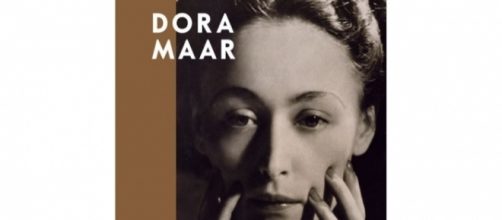In the early 20th century, Dora Maar was viewed as an important Surrealist painter and photographer, but she laid down her brushes and camera when she became Picasso’s mistress, and after he quit her, she never resumed her work and lived in obscurity for the next 50 years until her death at near 90 years old. A new book by Louise Baring – “Dora Maar: Paris in the Time of Man Ray, Jean Cocteau and Picasso” – lifts her out of indistinctness.
Giving credit where credit is due
With Picasso for ten years, she’s credited for inspiring his best work, including the painting of Guernica, which she documented.
Taking pictures of his creative process was the extent of her camera work. Her friends blamed Picasso for discouraging Maar from doing her own picture-making, saying he couldn’t stand the competition. When 60 he left her for 21-year-old painter Francois Gilot, Maar suffered a nervous breakdown. Baring’s book tells an old and largely untold story. Someone had to do it. All Maar got in a 524-page tome on Picasso by Wilhelm Boeck and Jaime Sabarte is a couple of sentences – one about her photographing the making of Guernica and the other noting that she was the 4th of Picasso’s six mistresses.
A sorry sight
In 1941, Picasso painted Maar as her mother was dying, making clear her state of mind in the portrait of her called “Weeping Woman.” In a New York Times obituary for Maar, Picasso was quoted saying, ''I could never see her, never imagine her, except crying.'' Never mind that while in his relationship with Maar, he continued relations with his former mistress, Marie-Therese Walter, sometimes even living with both of them together.
To hear the newspaper tell it, as time passed, Picasso painted Maar in a “cruel and tragic light.”
A sad state of affairs
Talk about cruel, a book by James Lord (''Picasso and Dora: A Personal Memoir'') chronicled the painter’s jealousy on learning of her starting a liason with Lord who was 15 years her junior. Even so, she never stopped grieving over losing him; even despite saying, ''Mediocrity is his best friend because it cannot detract from him, so he'll do anything to encourage it.'' Lord tells of the painter’s jealousy when she took up with him and how he acted out his fury by sending her what appeared to be a gift. Boxed in a large crate, she imagined a sculpture. But it was just a ratty, old “hideous chair.” No matter.
Maar refused to discard it and placed it in the entrance hall of her home. Thanks to Lord’s memoir, the Times obit, and this new bio by Baring, Maar comes out of Picasso’s shadow. Odd that the exhaustive 445-page study “Women, Art And Society” written by art historian Whitney Chadwick didn’t give Maar a single mention.

